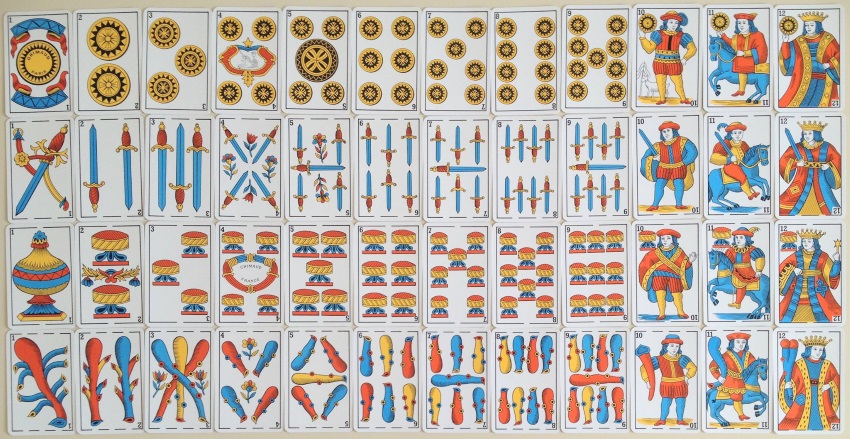
Across time, playing-card manufacturers produced decks meant for other uses beyond simple card playing including: instruction, propaganda and advertising. French suits were a revision of the German ones; keeping hearts but replacing bells with diamonds, acorns with clovers while clubs and leaves became pikes or spades.
Today’s 52-card deck preserves the four original French suits of preceding centuries: Clubs (♣) Diamonds (♦) Hearts (♥) and Spades (♠). These graphic symbols or ‘pips‘ bear little resemblance to the items they represented but were much easier to copy than the more ornate motifs of earlier times. Some historians have suggested that suits in a deck were meant to represent the four classes of Medieval society. Cups and chalices (modern hearts) might have stood for the clergy; swords (spades) for the nobility or the military; coins (diamonds) for the merchants; and batons (clubs) for peasants.
Got the Pip
However, the differences in pips from one deck to another suggest an unwillingness by card authorities to wholeheartedly embrace those beliefs e.g. bells could be found in early German hunting cards. Those pips would have been a more fitting symbol of German nobility than spades because bells were often attached to the jesses of a hawk in falconry, a sport reserved for Rhineland’s wealthy.
By contrast, diamonds would have represented the upper class in French decks since paving stones used in the chancels of churches were diamond-shaped and those stones marked the graves of the aristocrats. Photo Credit: Countakeshi/Wikimedia
OFF the WALL
Dark Horse Digital is a two-person, bootstrapped Start Up. It began in 2013 embodying the trans-Tasman spirit of its founders: of mateship, ingenuity and endurance. Off the Wall are some fair dinkum fascinations shared with our Facebook Followers.
 Our BAM! Card Game
Our BAM! Card Game 



